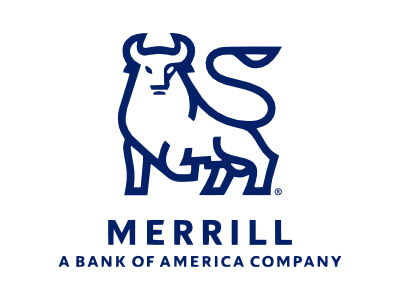The future of Social Security: How to prepare

As questions about Social Security grow, the amount young Americans save is even more critical. Here’s how you can work with an advisor to strengthen your financial future.
FOR GENERATIONS OF SAVERS, Social Security has been an essential building block of retirement planning, providing a guaranteed monthly payment for life that adjusts for inflation. Though never intended to be the sole source of retirement income, many of today’s younger Americans are realizing the size of that monthly payment may be smaller than they’d anticipated when they retire. In fact, according to an October 2021 poll from CivicScience, more than 53% of 25-to-44-year-olds doubt that Social Security will even be there for them.
How justified are these concerns? If no changes to the system are made, the Social Security Administration will be unable to pay scheduled benefits in full and on time starting in 2034, according to the most recent annual report from the Social Security Board of Trustees.1 But that doesn’t mean you’ll get no money when you retire; according to the report, you’d likely still receive about three-quarters of your Social Security benefit. The cause of the shortfall is simple: the number of people claiming benefits is rising, while the number of working-age people contributing to Social Security via payroll taxes is declining.
Many proposals have been floated to strengthen Social Security, says Gal Wettstein, senior research economist at the Center for Retirement Research at Boston College. But it’s likely that today’s workers will rely less and less on Social Security as a key piece of their retirement income strategy, even after a fix is implemented. “For younger savers especially, the money you personally save and invest is likely to continue to play a larger role in determining your financial security in retirement,” says Joe Tantillo, director, Retirement and Personal Wealth Solutions at Bank of America. Using these four steps, an advisor can help you develop a plan designed to create the income you’ll need in retirement.
Save and invest more for your future
It’s important to get an early start on saving and investing. Thanks to the power of compound interest, someone who started saving $500 a month at age 25 would have $588,000 at age 55, assuming a 7% long-term return, while someone who began saving the same amount 10 years later would only have about half as much, or $256,000.2
It could also help to reconsider your asset allocation. Though fixed income has a place in providing retirement income, investing a greater portion of your savings in equities and dividend-paying stocks might help to increase your nest egg’s growth potential.
Another investment option to consider is investing a portion of your savings in an annuity, says Tantillo. These insurance contracts offer tax-deferred growth on your assets and can create a consistent stream of income for life or for a period of time specified in the contract. “An annuity can provide an additional guaranteed income stream to supplement what you get from Social Security,” he adds. An advisor can help you understand the various types of annuities and what they can offer, as well as their risks, and help you establish an appropriate investment allocation for your goals, age, liquidity needs and risk tolerance.
Take advantage of all your pre-tax saving options
If you’re eligible for a 401(k), consider contributing the maximum. (In 2022, that’s $20,500 for those aged 55 or older.) At least contribute the amount needed to get your full employer match if your employer offers one. Then consider upping your contribution every time you get a raise.
If your employer offers a high-deductible health plan, consider selecting it so that you can contribute to a health savings account (HSA). “Contributions come out of your paycheck pre-tax, grow tax-free, and come out tax-free too, as long you use the money for qualified medical expenses,” Tantillo says. The funds can roll over year to year, helping you prevent health care costs from eroding your retirement savings.
Keep tax-efficiency in mind
Knowing how to draw on your retirement assets in the most tax-efficient way is another key to boosting your retirement income. Generally it’s best to withdraw from your taxable accounts first, then tax-deferred, followed by tax-free, says Tantillo. When you’re ready, an advisor can help you devise a plan that helps to optimize your income stream with taxes in mind.
Time your Social Security benefit carefully
While Social Security could play a more limited role in your retirement income in the future, it does represent a foundation upon which you can build your monthly income. Don’t leave any of it on the table, if you can help it. And remember that claiming before full retirement age reduces your benefits – for life. For every year you wait to claim, up to age 70, your monthly benefits increase by about 8%.
No matter what happens to Social Security, “maximizing the income you get from all your sources will go a long way toward helping you live the life you want in retirement,” says Tantillo. And regularly reviewing your strategies with an advisor as your expenses and financial priorities change can help you keep that retirement goal on track.
For more information, contact Merrill Lynch Financial Advisor Don P. Martone of the Hughes Landing office at (281) 882-4818.
1 The 2021 Annual Report of the Board of Trustees of the Federal Old-Age and Survivors Insurance and Federal Disability Insurance Trust Funds
2Bankrate.com investment goal calculator, 2021
Investing involves risk. There is always the potential of losing money when you invest in securities.
Asset allocation, diversification and rebalancing do not ensure a profit or protect against loss in declining markets.
Merrill, its affiliates, and financial advisors do not provide legal, tax, or accounting advice. You should consult your legal and/or tax advisors before making any financial decisions.
This material is not intended as a recommendation, offer or solicitation for the purchase or sale of any security or investment strategy. Merrill offers a broad range of brokerage, investment advisory (including financial planning) and other services. Additional information is available in our Client Relationship Summary.
Merrill Lynch, Pierce, Fenner & Smith Incorporated (also referred to as “MLPF&S” or “Merrill”) makes available certain investment products sponsored, managed, distributed or provided by companies that are affiliates of Bank of America Corporation (“BofA Corp.”). MLPF&S is a registered broker-dealer, registered investment adviser, Member SIPC and a wholly owned subsidiary of BofA Corp.
Insurance and annuity products are offered through Merrill Lynch Life Agency Inc., a licensed insurance agency and wholly owned subsidiary of Bank of America Corporation.
Trust, fiduciary and investment management services are provided by Bank of America, N.A. and its agents, Member FDIC, or U.S. Trust Company of Delaware. Both are wholly-owned subsidiaries of Bank of America Corporation.
Banking products are provided by Bank of America, N.A. and affiliated banks, Members FDIC and wholly owned subsidiaries of Bank of America Corporation.
Investment, insurance and annuity products:
Investment products:
|
Are Not FDIC Insured |
Are Not Bank Guaranteed |
May Lose Value |
© 2022 Bank of America Corporation. All rights reserved.
3993855
















